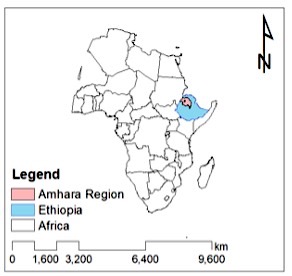About this CARP project
 The selected study district (Ebenat) comprises 29 food-insecure rural kebeles. All kebeles are Productive Safety Nate program (PSNP) beneficiaries. The district as a whole is cited as drought-prone. As it is the most vulnerable area, we aimed to assess the adaptive strategies being used and barriers to adopt recommended strategies. Once available adaptive strategies and determinant factors to implement them are identified, policymakers and local farmers will use the information to revise the existing approach and practice accordingly.
The selected study district (Ebenat) comprises 29 food-insecure rural kebeles. All kebeles are Productive Safety Nate program (PSNP) beneficiaries. The district as a whole is cited as drought-prone. As it is the most vulnerable area, we aimed to assess the adaptive strategies being used and barriers to adopt recommended strategies. Once available adaptive strategies and determinant factors to implement them are identified, policymakers and local farmers will use the information to revise the existing approach and practice accordingly.
Study site
Ebenat District in northwestern Ethiopia, Amhara National Regional State.
Main Research Questions
- What is the variability of intra-seasonal climate over the Ebenat district in Northwestern Ethiopia?
- What adaptation mechanisms are being used by farm households to reduce vulnerability in the livelihood zones?
- What are the barriers to farm households to choose the available adaptive strategies in response to climate variability?
The topic and all objectives of the study are related to DRR. The need for adaptation is to tackle the existing and expected Disaster risk and to reduce the impact. It is all about adapting to climate change and variability in the study area, as the area is drought-prone.

Muluneh Getaneh Tegegn
PhD candidate
Bahir Dar University, Ethiopia
Principal investigator
bemushe2014@gmail.com

Arega Bazezew Berlie
Professor
Bahir Dar University

Emiamrew Yosef Gebreegziabher

